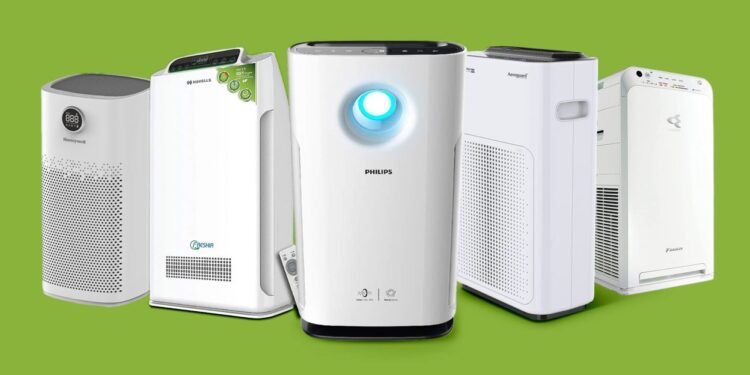Maintaining a healthy living environment has become a top priority in today’s fast-paced and technology-driven world. With a growing emphasis on wellness and comfort, many homeowners are focusing on improving indoor air quality to minimize health risks associated with airborne contaminants. Common culprits—such as dust, smoke, allergens, pet dander, and even certain viruses—can lead to a range of respiratory issues and general discomfort. Fortunately, modern technology now offers a sophisticated and convenient solution: smart air purifiers.
These devices do more than simply filter impurities; they integrate seamlessly with smartphone apps, voice commands, or advanced sensors to monitor air quality in real time, adjust filtration levels automatically, and provide valuable data about your home’s environment. This all-in-one article explores the concept of smart air purifiers, their benefits, the top models in the market, and how to select the right one for your needs. From optimizing breathing comfort to streamlining your home automation setup, a smart air purifier represents a worthwhile investment for any modern household.
Modern life is rife with hidden air quality issues—some so subtle we barely notice them. However, extended exposure to pollutants can result in everything from mild irritations to serious health complications. Traditional air purifiers use filters (like HEPA or activated carbon) to capture particulate matter. Yet, the new age of smart air purifiers raises the bar by integrating advanced functionalities such as:
A. Remote Control via Wi-Fi
-
Devices connect to your home network, enabling control and monitoring through dedicated smartphone apps, voice assistants, or third-party platforms like Google Home or Amazon Alexa.
-
Users can toggle settings, change fan speeds, or receive alerts on air quality from anywhere, adding a layer of convenience often absent in conventional models.
B. Real-Time Sensors
-
Built-in sensors measure airborne particles (like PM2.5), volatile organic compounds (VOCs), and sometimes humidity or temperature.
-
When pollutant levels rise, the purifier automatically ramps up filtration speed to quickly address the issue—achieving optimal indoor air quality without manual intervention.
C. Auto Mode & Customized Schedules
-
Smart purifiers come equipped with “auto mode,” which adjusts fan speed based on changing air quality data.
-
Some allow daily or weekly schedules, so you can set lower fan speeds at night for quieter operation or higher speeds during the day to remove peak pollutant levels.
D. Filter Maintenance Notifications
-
Many units use smart tracking for filter life. As soon as a filter approaches the end of its effective lifespan, the purifier notifies you via app or LED display, simplifying maintenance.
E. Energy Efficiency
-
Because many of these devices can self-regulate based on real-time air quality, they run more efficiently. They might only rev up the fan under heavier pollutant loads, reducing overall power consumption.
The result is an intelligent, hands-off air purification system that not only cuts down on harmful particulates but also merges seamlessly into a connected, automated household.
B. Core Benefits of Advanced Air Filtration
Before diving into product recommendations, it’s valuable to understand precisely why these innovative purifiers have become so indispensable:
A. Enhanced Respiratory Health
-
Allergen Reduction: Whether you suffer from hay fever, dust mite sensitivities, or pet allergies, a smart air purifier can trap a significant amount of airborne allergens.
-
Asthma Relief: Fine particulate matter like dust, smoke, or pollen can exacerbate asthma. By catching these irritants, a smart purifier supports a more comfortable breathing environment.
-
Virus and Bacteria Mitigation: Certain models boast specialized filters that capture some pathogens, potentially limiting the spread of common airborne germs.
B. Real-Time Adjustments
-
Interactive Tracking: Through integrated apps, you can observe fluctuations in air quality throughout the day. This awareness can inform decisions about cleaning schedules or opening windows.
-
Data Analytics: Some purifiers log historical data, enabling you to identify patterns—like times of day when pollution peaks or activities that worsen air quality.
C. User-Friendly Automation
-
Set-and-Forget Functionality: Auto modes sense air quality changes and respond instantly, making manual calibration almost redundant.
-
Voice Control: For those who integrate with Alexa or Google Assistant, controlling your purifier can be as simple as saying, “Alexa, turn the air purifier to high.”
D. Reduced Noise Pollution
-
Quiet Operation: These devices often run whisper-quiet at lower speeds, making them suitable for bedrooms, nurseries, or home offices.
-
Night Mode: Some purifiers incorporate a dedicated night mode, dimming lights and lowering fan speeds to minimize disturbances.
E. Energy and Cost Savings
-
Optimized Power Use: By running only at needed speeds, you aren’t continuously blasting the fan on high, which lowers electricity usage.
-
Longer Filter Life: Efficient auto modes and timely filter alerts help ensure filters are used effectively, preventing premature replacement and saving money long-term.
These benefits underscore why upgrading from a standard purifier to a smart variant is often a game-changer for homeowners who care about convenience, advanced features, and top-tier air quality.
C. Detailed Reviews of Leading Smart Air Purifiers
To guide you toward the best fit for your home, we’ve compiled top picks that blend cutting-edge features with proven filtration performance. Each brand and model offers distinct advantages, catering to different room sizes, user preferences, and budgets.
1. Dyson Purifier Cool (TP07)
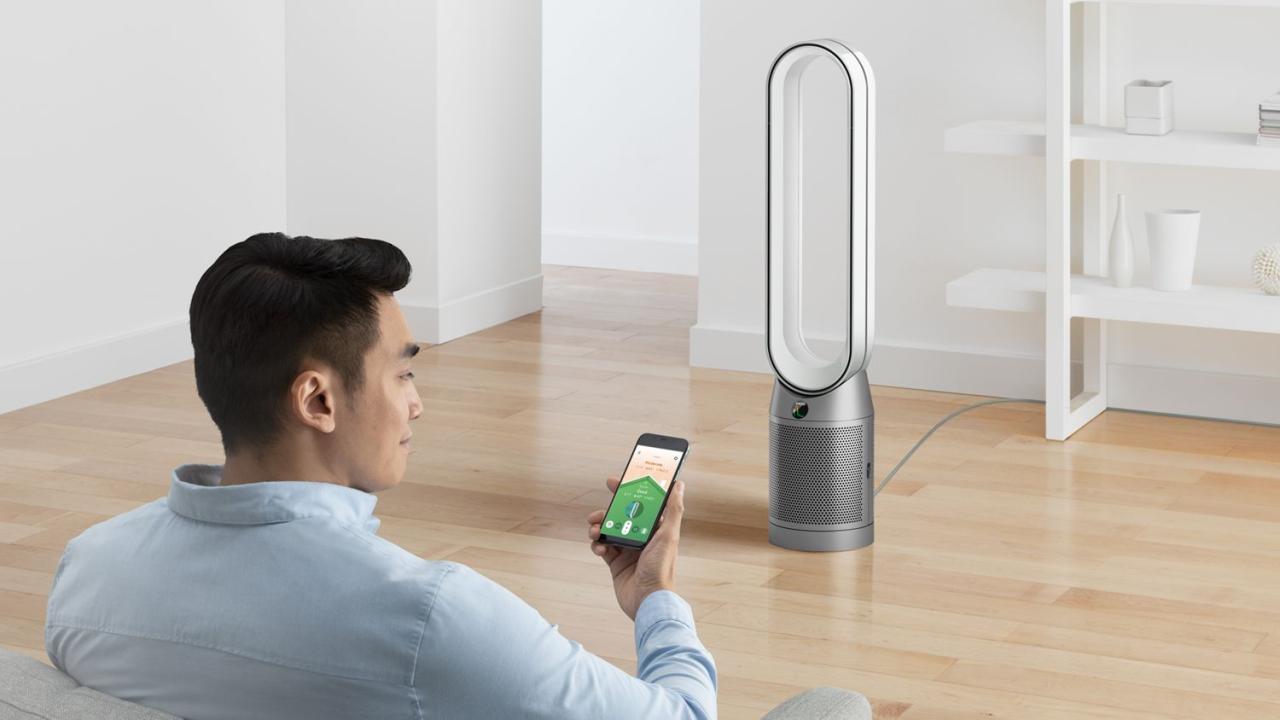 Dyson has always been synonymous with innovative design and superior performance. The Dyson Purifier Cool (TP07) stands out, both aesthetically and functionally, combining a tower fan concept with advanced air filtration. Beyond purifying the air, it doubles as a fan—an added bonus during warmer seasons.
Dyson has always been synonymous with innovative design and superior performance. The Dyson Purifier Cool (TP07) stands out, both aesthetically and functionally, combining a tower fan concept with advanced air filtration. Beyond purifying the air, it doubles as a fan—an added bonus during warmer seasons.
Key Features
A. Advanced Connectivity: The device pairs via Wi-Fi and Bluetooth, giving you full remote control from the Dyson Link App. You can monitor filter life, humidity, temperature, and real-time air quality data.
B. Air Multiplier™ Technology: By amplifying surrounding air, the TP07 efficiently distributes purified air across the room, creating a consistent airflow without visible blades.
C. HEPA Filtration: Dyson’s glass HEPA filter traps 99.97% of particles as small as 0.3 microns. The purifier also includes an activated carbon layer to address odors and harmful gases.
D. LCD Display: An on-device display provides instant updates on pollutant levels (PM2.5, PM10, VOCs, NO2) and fan speed.
E. Voice Control: Supports Alexa and Google Assistant, enabling hands-free commands, like adjusting speed or switching modes.
Why It Shines
-
2-in-1 Function: The dual role as a cooling fan plus air purifier can be a major space-saver.
-
Sleek Design: Unlike many purifiers, the Dyson Purifier Cool contributes to a modern aesthetic rather than clashing with it.
-
Superior Technology: The brand’s hallmark is engineering prowess, and this model reflects it, from quiet operation to advanced sensor accuracy.
Potential Drawbacks
-
Premium Price: Dyson’s cutting-edge design carries a steeper price tag than budget alternatives.
-
Filter Replacement Costs: While filters are high-quality, they can be relatively expensive to replace.
2. Levoit Core 400S
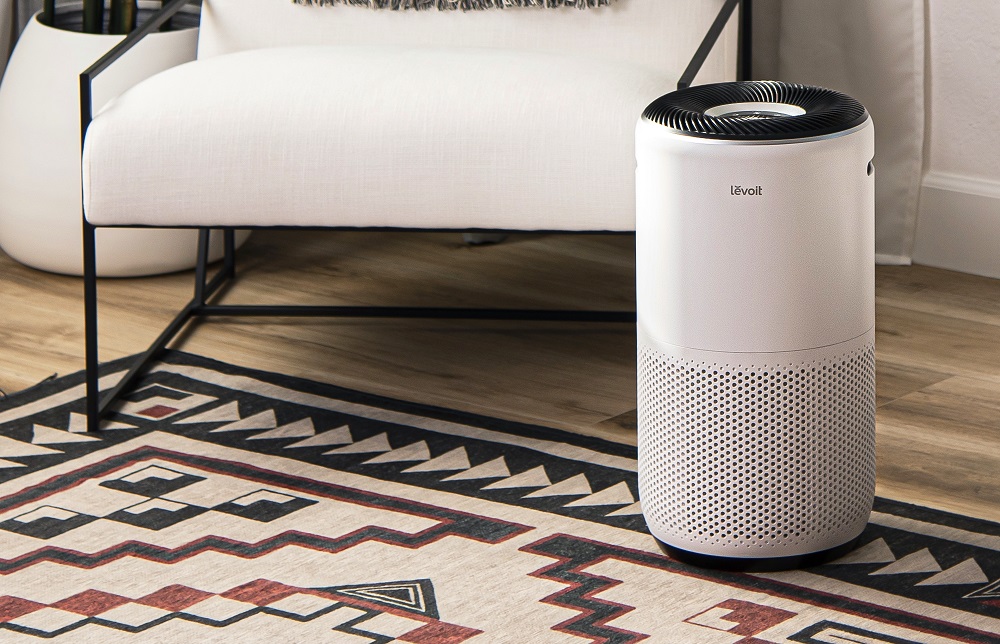
Levoit has made a name for itself by providing affordable air purifiers without sacrificing quality. The Levoit Core 400S is designed for medium-to-large areas, delivering robust performance in capturing common airborne irritants such as pollen, dust, and smoke.
Key Features
A. Smart App Control: Syncs with the VeSync app, letting you check air quality, customize timers, and toggle settings.
B. Voice Assistant Compatibility: Works seamlessly with Amazon Alexa and Google Assistant, so you can manage the purifier with a simple voice command.
C. 3-Stage Filtration: Incorporates a pre-filter for large particles, an H13 True HEPA filter for microscopic allergens, and an activated carbon filter for odors and VOCs.
D. Noise Reduction: Runs at 24 dB in its Sleep Mode—soft enough to let you rest without distraction.
E. Real-Time Air Quality Indicator: A built-in sensor updates the color-coded ring to visually signal changes in indoor air quality.
Why It Shines
-
Excellent Cost-to-Performance Ratio: Despite its modest price, it rivals pricier competitors in filtration effectiveness.
-
User-Friendly App: VeSync’s well-designed interface makes scheduling or adjusting fan speeds intuitive.
-
Compact Yet Powerful: Its cylindrical shape and lightweight design make it easy to place in various settings, from offices to living rooms.
Potential Drawbacks
-
Limited Advanced Data: Air-quality metrics in the app might be less detailed than high-end models.
-
Filter Availability: Finding replacement filters in local stores can sometimes be challenging, although online options abound.
3. Coway AP-1512HH Mighty
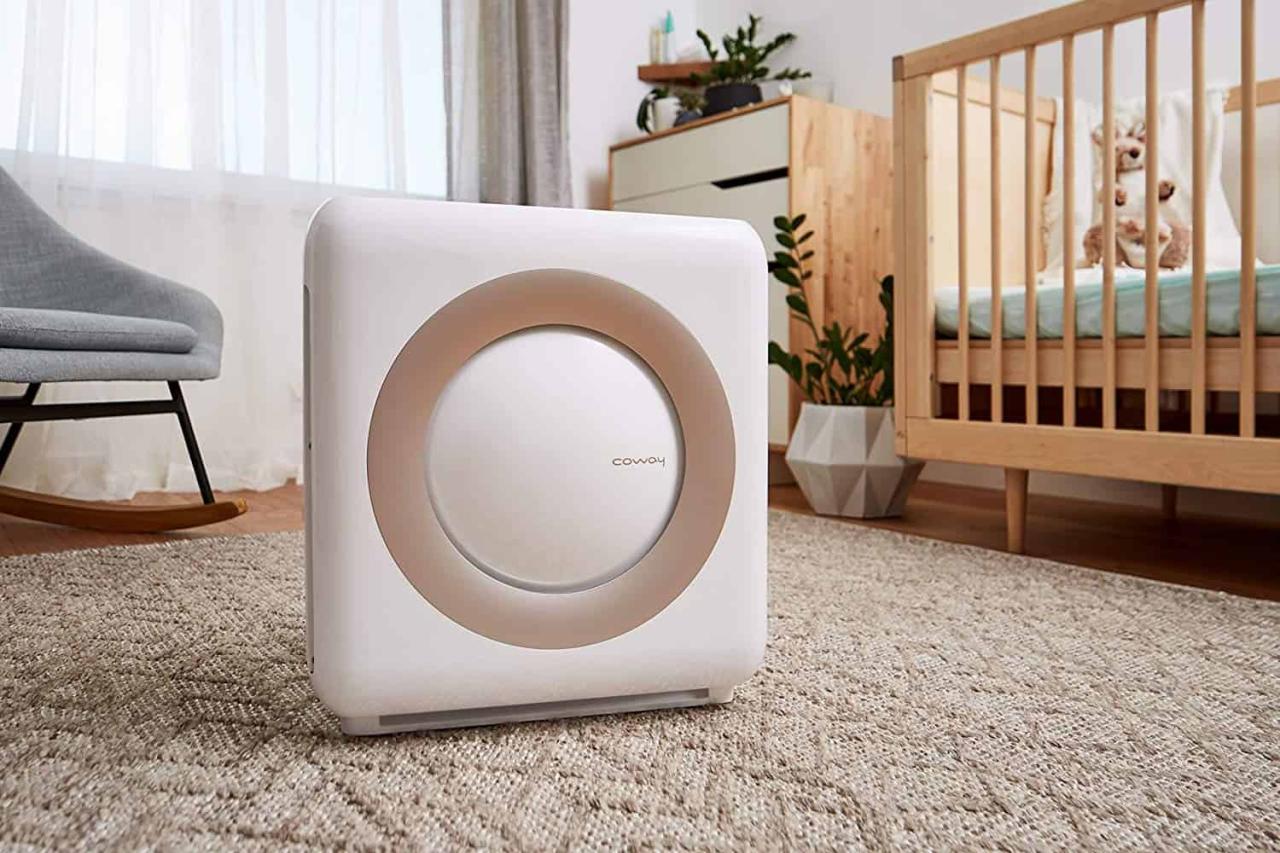
Often mentioned in “best of” lists, the Coway AP-1512HH Mighty has garnered a reputation for remarkable air filtration at a competitive price. This capable workhorse excels at quickly cleaning large rooms and relies on advanced features to automate much of its operation.
Key Features
A. 4-Stage Filtration: Includes a pre-filter, deodorization filter, True HEPA filter, and a Vital Ion technology that helps freshen the air.
B. Smart Mode: The purifier adjusts fan speed to reflect live readings from the built-in particle sensor, ensuring consistent comfort.
C. Eco Mode: If air remains clean for a prolonged period, the fan switches off, reducing power usage.
D. Air Quality Indicator: An LED ring shifts color based on detected pollutant levels—blue means clean, purple indicates moderate, and red highlights poorer air quality.
E. Energy Star Certified: Meets high energy-efficiency standards, saving you money over time.
Why It Shines
-
High CADR (Clean Air Delivery Rate): Quickly cycles air in larger rooms, beneficial for homes with open layouts.
-
Low-Maintenance Filters: Pre-filters are washable, increasing longevity for the main filters.
-
Proven Track Record: Consistently praised in independent testing, the AP-1512HH is widely considered among the best in its price segment.
Potential Drawbacks
-
Relatively Simple Connectivity: While there’s an LED indicator and auto mode, its connectivity might be more basic compared to Wi-Fi-enabled counterparts. Some models do offer Wi-Fi, though it may not be as feature-rich.
-
Design Preference: The aesthetic is fairly understated, which might not appeal to users seeking a more modern look.
4. Blueair Blue Pure 211+
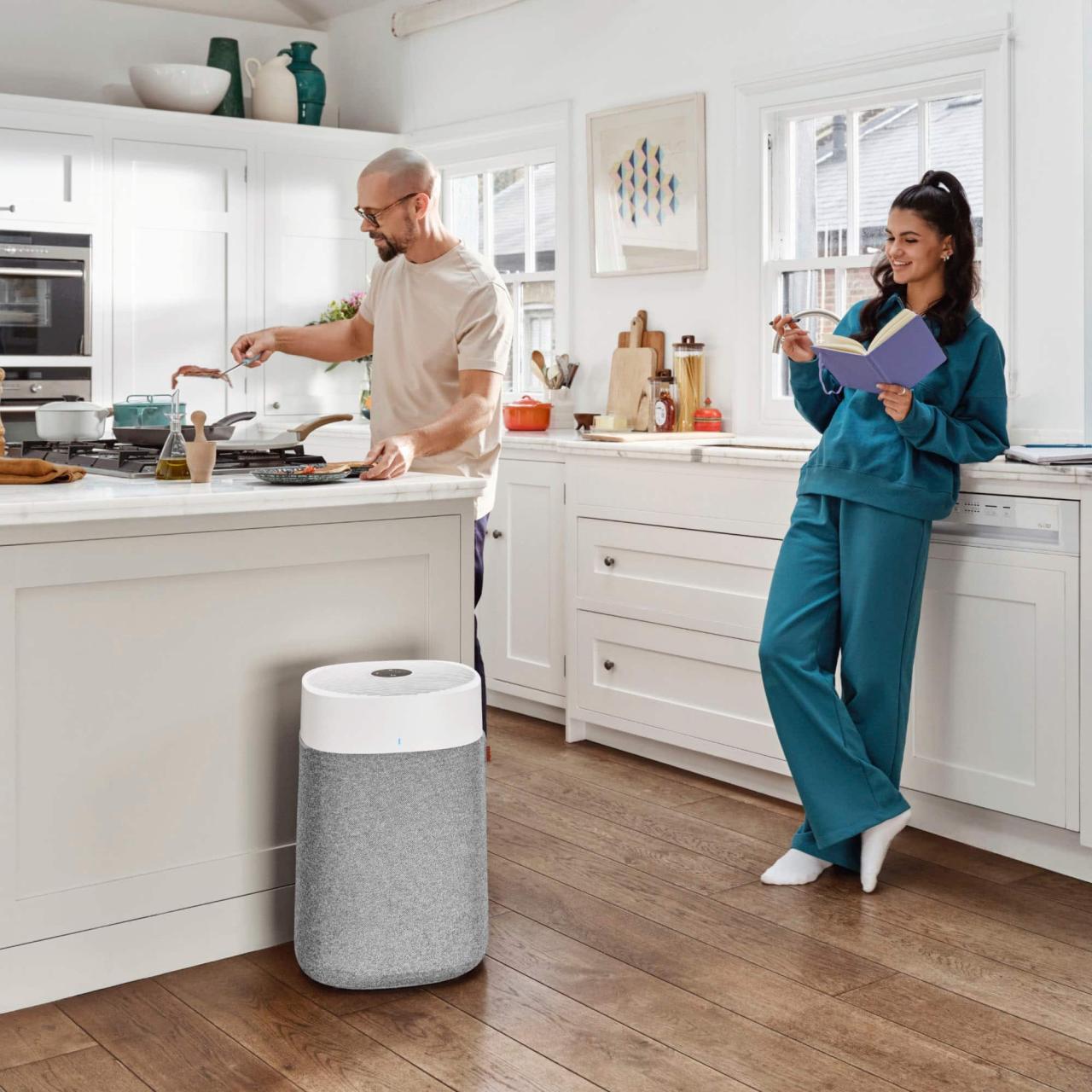
Swedish brand Blueair is known for quiet yet powerful air purifiers. The Blue Pure 211+ merges minimalistic design with robust filtration. Using the brand’s signature HEPASilent™ technology, it targets a range of pollutants effectively in larger spaces.
Key Features
A. Wi-Fi Connectivity: In newer versions or bundles, the 211+ can integrate with Blueair’s app, letting you control speed and track filter status.
B. HEPASilent™ Filtration: Combines electrostatic and mechanical filtration to capture 99.97% of airborne particles while operating with minimal noise.
C. Carbon Filter: Addresses common odors, smoke, and VOCs.
D. One-Button Control: Physically, operation is extremely simple—great for those who prefer minimal fuss.
E. Large Coverage: Suitable for rooms up to roughly 540 sq. ft., making it perfect for large living areas, open-concept offices, or basement spaces.
Why It Shines
-
Powerful and Quiet: The electrostatic element allows for a quieter fan speed, even when capturing smaller particles.
-
Modular Design: The washable pre-filter comes in various colors, letting you match your décor.
-
Easy Maintenance: The filter replacement process is straightforward, and the device itself lacks complex control panels.
Potential Drawbacks
-
Limited Detailed Control: Some may find the single-button approach too sparse if they want granular speed adjustments or specialized modes.
-
Higher Operating Cost: Filters might be pricier, and the device can draw more power at high speeds compared to smaller purifiers.
5. Xiaomi Mi Air Purifier 3H

The Xiaomi Mi Air Purifier 3H packs impressive performance at a fraction of the cost of certain premium brands. Xiaomi leverages a 3-in-1 filter approach and app-based connectivity to deliver a budget-friendly, high-quality solution.
Key Features
A. 3-in-1 Filter System: Combines an H13 HEPA filter for tiny particulates, activated carbon for odor and VOC absorption, plus a pre-filter for larger debris.
B. OLED Touch Display: Provides a clear readout of real-time air quality (PM2.5 levels), temperature, and humidity.
C. Smart Home Integration: Compatible with Mi Home App, Google Assistant, and Alexa for voice control.
D. Energy Efficient: Consumes as little as 38W on the highest setting.
E. 360° Air Intake: Ensures comprehensive coverage for spaces up to around 484 sq. ft.
Why It Shines
-
Budget-Friendly: Top-tier performance is accessible for cost-conscious shoppers.
-
Sleek Profile: The cylindrical tower shape fits neatly in corners or next to furniture without being obtrusive.
-
Global Ecosystem: Xiaomi’s lineup includes lights, sensors, and cameras, so it merges seamlessly into a broader smart home environment.
Potential Drawbacks
-
Availability of Replacement Filters: Depending on your region, Xiaomi accessories could be more challenging to procure locally.
-
App Localization: Some of Xiaomi’s software features can vary by region, and the interface might have minor translation quirks.
D. Key Factors for Selecting the Perfect Smart Purifier
Every household’s needs differ, so it’s crucial to weigh these factors when picking an air purifier that best aligns with your lifestyle, room size, and budget:
A. Room Coverage
-
Square Footage: Check the model’s recommended coverage range. A purifier designed for 200 sq. ft. won’t be as effective in a 500 sq. ft. living room.
-
CADR Rating: The Clean Air Delivery Rate measures how effectively and quickly the purifier filters air. Look for higher CADR numbers for larger spaces.
B. Filtration Systems
-
True HEPA Filters (H13/H14): Capture 99.97% of ultra-fine particles, essential for those with severe allergies or asthma.
-
Activated Carbon Filters: Target odors, VOCs (like formaldehyde), and smoke. If you cook heavily or have smokers in the home, carbon is vital.
-
Ionizers and UV Tech: Some purifiers also incorporate ionizers or UV lights. While these can boost filtration, ensure the technology does not produce ozone above safe levels.
C. Smart Home Integration
-
Voice Assistants: If you use Alexa or Google Assistant, check if the purifier is compatible. Voice commands reduce the need for manual interaction.
-
Mobile Apps: Consider the app’s ease of use. Some feature in-depth graphs and scheduling options, while others provide only basic toggles.
-
Ecosystem Synchronization: If you already use a brand’s ecosystem (e.g., Dyson, Xiaomi), a same-brand purifier might offer synergy with existing devices.
D. Noise Levels
-
Decibel Ratings: For bedrooms or baby nurseries, focus on models with whisper-quiet or night modes.
-
Fan Speeds vs. dB: Remember that noise typically increases with fan speed, so if you require heavy filtration often, you’ll want a model noted for low noise across multiple speed settings.
E. Maintenance and Filter Costs
-
Frequency of Replacements: The cost of new filters can add up quickly. Look for easily accessible, reasonably priced replacements.
-
Warranties: Some brands provide extended warranties that can offset repair costs or faulty parts over time.
F. Energy Consumption
-
Energy Star Certification: Indication that the device meets strict efficiency standards.
-
Auto/Eco Modes: Automatic power-down or reduced power usage modes enhance energy savings.
E. Maximizing Smart Air Purifiers in a Connected Home
Smart purifiers are only one piece of the puzzle. When orchestrated correctly, they become part of a broader, more intuitive living space:
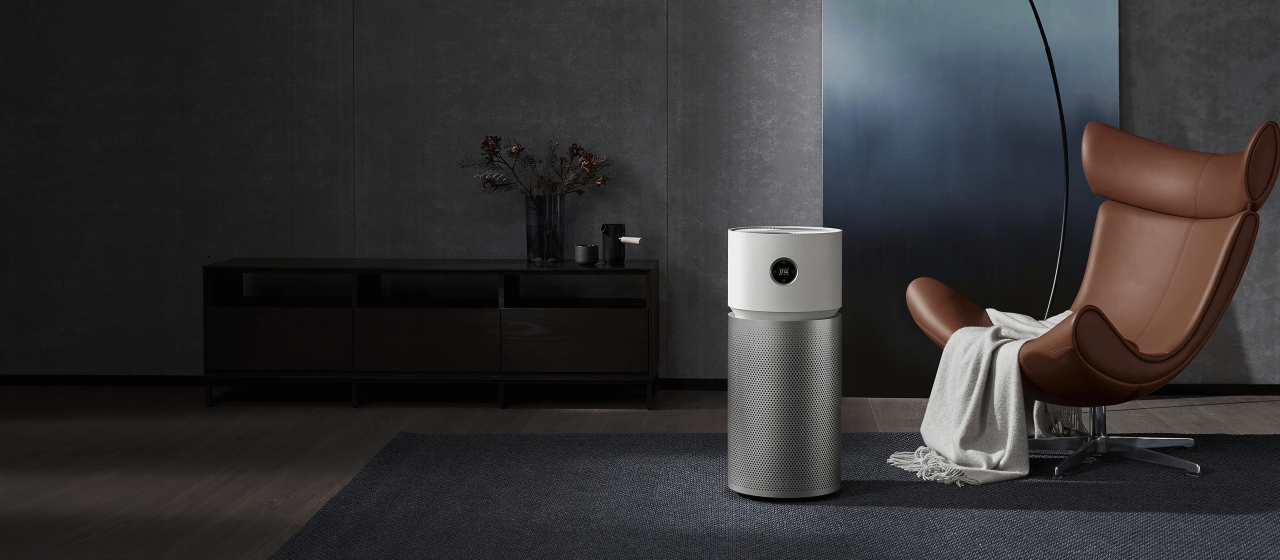
A. Integrate With Climate Control
-
If your home uses a smart thermostat, link it with your purifier to coordinate temperature settings and air cleansing. For instance, automatically increase purification when the HVAC system turns off to optimize overall air circulation.
B. Combine With Smart Sensors
-
Place additional air quality or humidity sensors around the house. Then, when these sensors detect smoke in the kitchen or high humidity in the bathroom, they can trigger your purifier to ramp up filtration.
C. Use Routines and Scenes
-
In systems like Amazon Alexa or Google Home, create routines where turning on “Bedtime Mode” dims the lights and sets the purifier to a lower fan speed. Alternatively, “Leaving Home” can turn it on high to thoroughly clean the house while you’re away.
D. Check Real-Time Reports
-
Regularly monitor historical and real-time data through the purifier’s app. Noticing consistent spikes at certain times (like after cooking or cleaning) can help you adopt better ventilation practices or filter changes.
E. Positioning Matters
-
Place the purifier in central areas or near known sources of pollution (kitchens, windows that face busy roads, or near pet areas). Ensure there’s enough clearance for airflow.
Frequently Asked Questions
Q1: How often should I run my air purifier?
A1: For optimal results, run it continuously or on auto mode so it can respond in real time to pollutant spikes. Running it 24/7 ensures consistent air quality, particularly for homes with kids, pets, or residents with allergies.
Q2: Do smart purifiers generate ozone?
A2: Most modern smart purifiers are designed without ozone-generating components. However, if they feature ionizers or UV-C lights, consult the product manual to ensure they meet safety standards.
Q3: Is it worth investing in a more expensive brand like Dyson?
A3: Premium brands often include better build quality, advanced sensors, and more robust customer support. If you value high design standards and multi-functionality (like fan + purifier), paying a premium could be justified.
Q4: Where should I place my air purifier?
A4: Position it in rooms where you spend the most time—like the living room or bedroom. Keep it away from obstructions like curtains or furniture and allow space around the device for unrestricted airflow.
Q5: Are these purifiers suitable for large office spaces?
A5: Many models (like the Coway Mighty or Blue Pure 211+) work well in large areas. For office environments larger than the recommended coverage, use multiple units or seek commercial-grade options.
Conclusion
Smart air purifiers reflect a broader trend of using cutting-edge technology to create healthier and more comfortable living spaces. By merging Wi-Fi connectivity, real-time monitoring, auto-adjustment modes, and robust filtration systems, these devices ease your daily concerns about air quality. Whether you are drawn to the sophisticated style of Dyson, the budget-friendly prowess of Xiaomi, or the tried-and-true efficiency of Coway, there’s a wealth of stellar options available.

